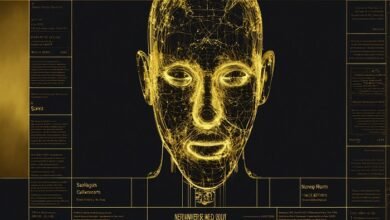The Power of Reverse Image Search: A Comprehensive Guide

In the digital age, images play a significant role in how we communicate and consume information. One of the most powerful tools available for understanding and verifying images is “reverse image search.” This blog post explores the functionalities, benefits, and applications of reverse image search, providing a detailed overview for both casual users and professionals.
What is Reverse Image Search?
Reverse image search is a technology that allows users to search the internet using an image instead of text. By uploading an image or pasting an image URL into a reverse image search engine, users can find information related to that image, including similar images, websites where it appears, and metadata. Reverse image search has become an indispensable tool for various applications, from verifying the authenticity of an image to finding the original source.
How Does Reverse Image Search Work?
Reverse image search works by analyzing the content of an uploaded image and comparing it to a vast database of images on the web. The reverse image search algorithm looks at various elements such as colors, shapes, and textures to find matches. Once the analysis is complete, the reverse image search engine returns a list of results that closely match the uploaded image. This process is quick and highly accurate, making reverse image search a reliable tool for various purposes.
Benefits of Using Reverse Image Search
- Image Verification: Reverse image search helps verify the authenticity of an image, ensuring that it has not been altered or misrepresented.
- Source Identification: With reverse image search, users can easily find the original source of an image, which is crucial for crediting creators and understanding context.
- Content Discovery: Reverse image search allows users to discover similar images, find higher resolutions, or explore related content.
Popular Reverse Image Search Tools
Several platforms offer reverse image search capabilities, each with unique features. Some of the most popular options include:
- Google Images: Known for its vast database and user-friendly interface.
- TinEye: Specializes in finding exact matches and tracking image usage across the web.
- Bing Visual Search: Offers comprehensive image search capabilities with additional features for finding products and recipes.
Step-by-Step Guide to Using Reverse Image Search
Using reverse image search is straightforward. Here’s a step-by-step guide:
- Choose a Tool: Select a reverse image search tool that meets your needs.
- Upload Image or Paste URL: Upload the image you want to search for or paste its URL into the reverse image search engine.
- Initiate Search: Click the search button to start the reverse image search process.
- Review Results: Browse through the search results to find the information you need.
- Refine Search: If necessary, refine your search by using different images or adjusting search parameters.
Safety and Privacy Concerns
While reverse image search tools offer significant benefits, it’s essential to consider privacy and safety. Ensure that you use these tools responsibly and understand their privacy policies. Many reverse image search engines prioritize user privacy, but it’s always best to stay informed about how your data and images are handled.
Advanced Features of Reverse Image Search
Modern reverse image search tools come equipped with advanced features that enhance the user experience, such as:
- Metadata Extraction: Retrieves metadata associated with the image, including the date, location, and camera settings.
- Image Recognition: Identifies objects, landmarks, and text within an image, providing additional context and information.
- Visual Similarity: Finds visually similar images, helping users explore related content and discover new information.
Applications Beyond Simple Searches
The applications of reverse image search extend beyond simple image verification. Some notable uses include:
- Intellectual Property Protection: Ensuring that images are not used without permission, helping artists and photographers protect their work.
- Social Media Monitoring: Tracking the spread of images across social media platforms to monitor brand reputation and detect unauthorized use.
- Research and Journalism: Verifying the authenticity of images and finding original sources to support accurate reporting and research.
The Future of Reverse Image Search
The future of reverse image search is promising, with continuous advancements in AI and machine learning technology. We can expect these tools to become even more accurate, efficient, and versatile. Future developments may include better integration with other search technologies, improved user interfaces, and broader applications across various industries. As technology evolves, reverse image search will play an increasingly vital role in how we interact with and understand digital images.
Conclusion
Reverse image search has revolutionized the way we search for and interact with images online. With its advanced features and ease of use, reverse image search is an invaluable tool for both personal and professional applications. As technology continues to advance, the capabilities of reverse image search will only continue to expand, promising an exciting future for this powerful tool.
FAQ
1. What is reverse image search?
Reverse image search is a technology that allows users to search the internet using an image instead of text, finding information related to that image, including similar images and metadata.
2. How accurate is reverse image search?
Reverse image search tools are generally very accurate, thanks to advanced algorithms that analyze and compare various elements of the image to find matches.
3. Are reverse image search tools safe to use?
Yes, most reverse image search tools prioritize user privacy and data protection. It’s important to review the privacy policies and use reputable tools to ensure data security.
4. Can reverse image search be used for professional purposes?
Absolutely! Reverse image search is widely used by professionals in various fields, including journalism, research, and intellectual property protection, to verify images and find original sources.
5. What are the advanced features of reverse image search tools?
Advanced features of reverse image search tools include metadata extraction, image recognition, and visual similarity, all designed to enhance the user experience and provide additional context and information.





